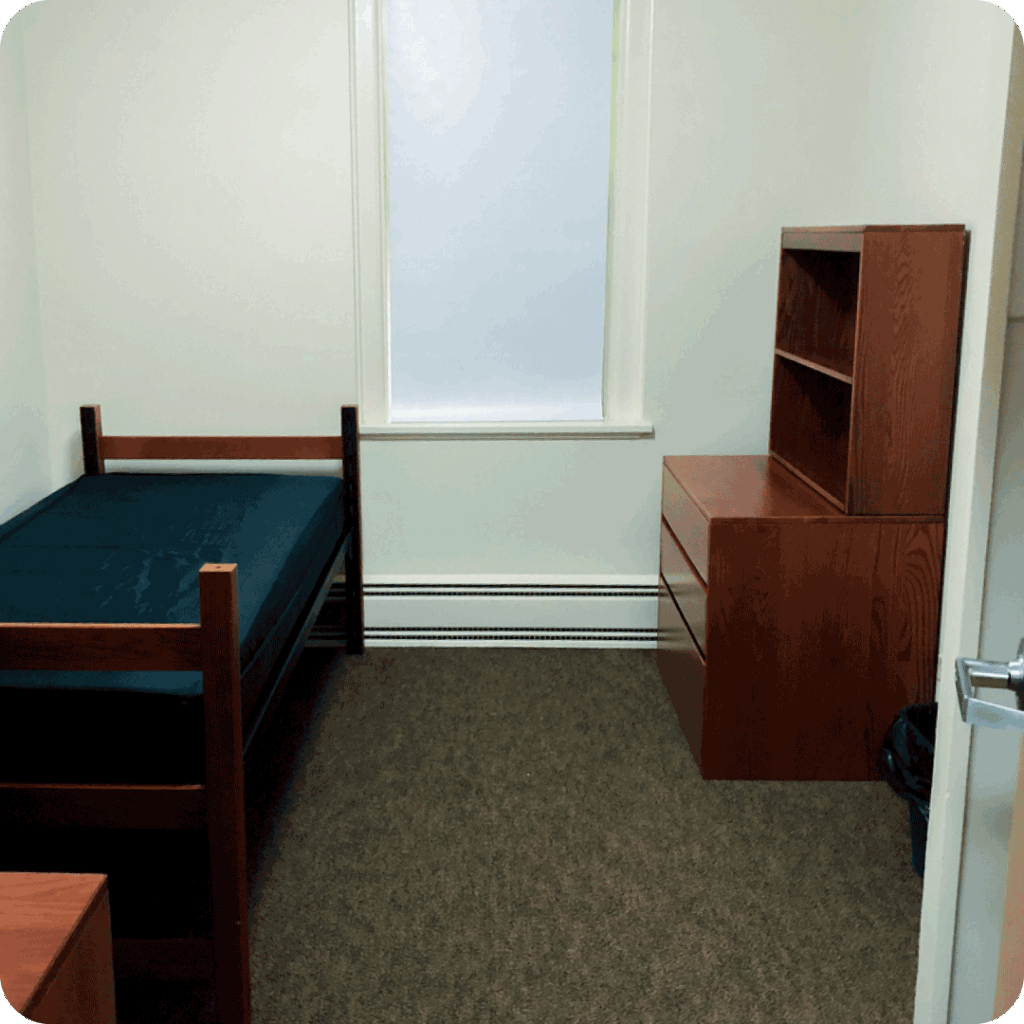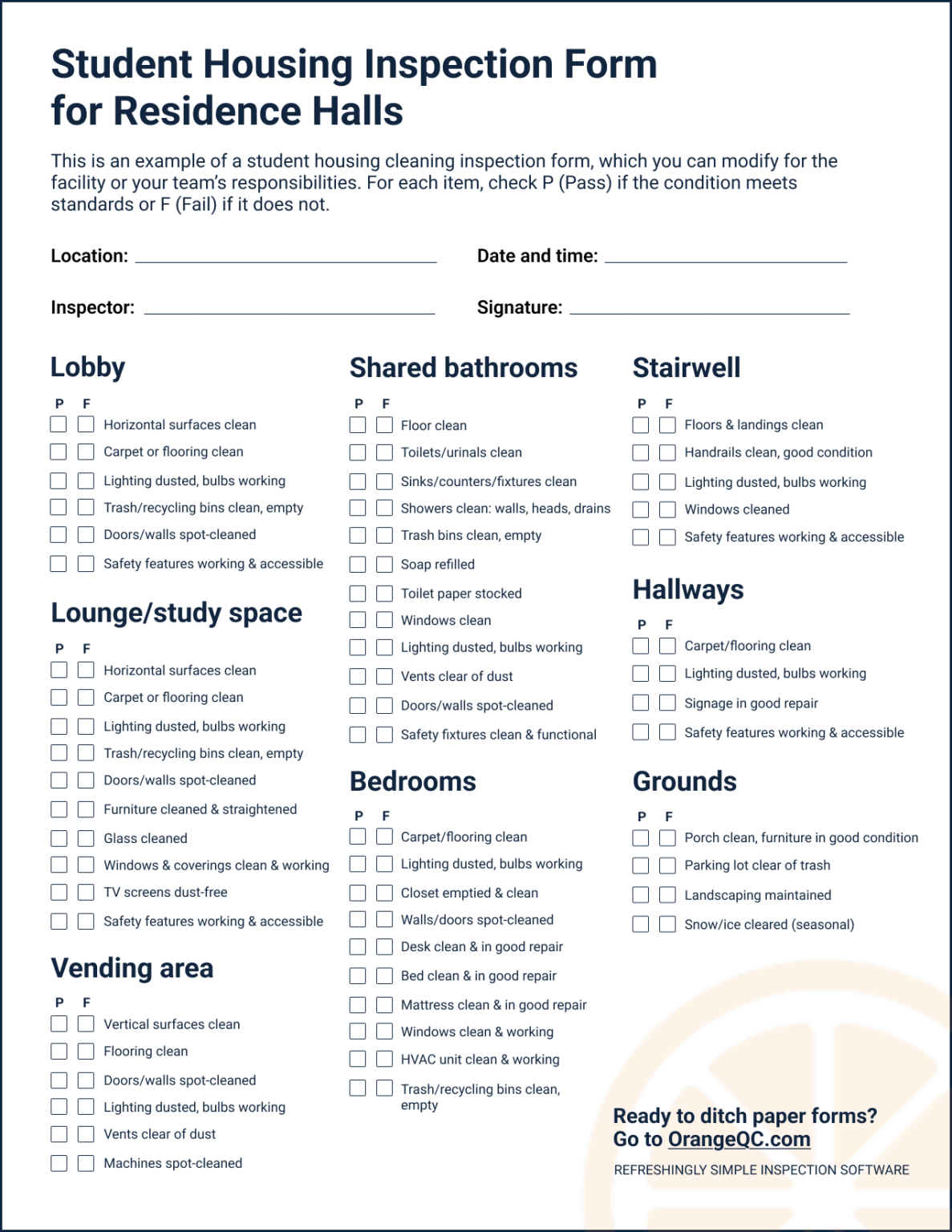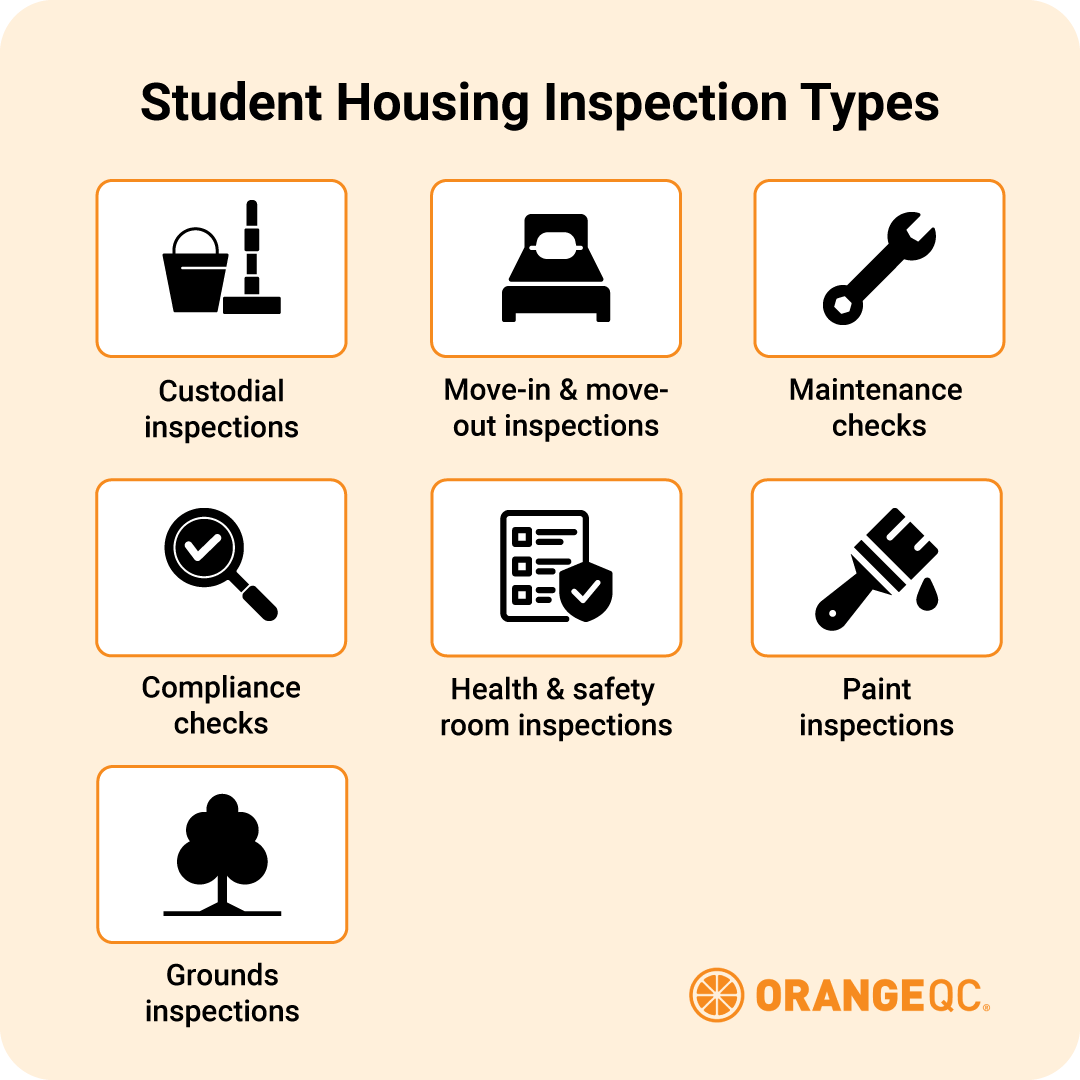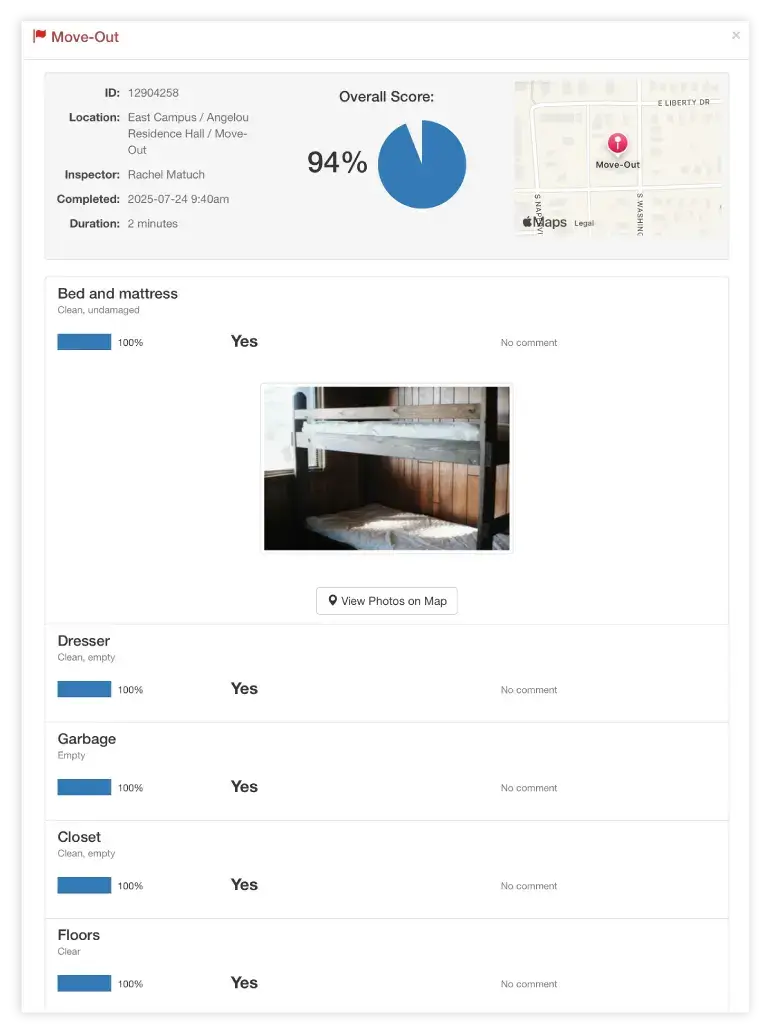
Student Housing Turn Season Inspection Form and Checklist
Student housing move-out inspection form & checkout inspection checklist Turn season demands efficiency. Prepare your team to handle the logistics with an organized move-out inspection checklist. Download Student Housing Move-Out Inspection Form (PDF) Download Student




